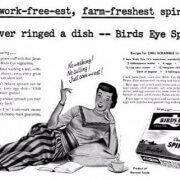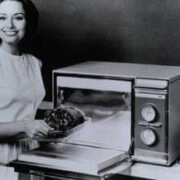December 23 is Festivus
Happy Festivus!
Today is Festivus. What is it? Where did it come from? Per Wikipedia:
Festivus is b
oth a parody and a secular holiday celebrated on December 23 that serves as an alternative to participating in the pressures and commercialism of the Christmas season. It has been described as “the perfect secular theme for an all-inclusive December gathering.”
The holiday’s celebration, as it was shown on Seinfeld, includes a Festivus dinner, an unadorned aluminum Festivus pole, practices such as the “Airing of Grievances” and “Feats of Strength,” and the labeling of easily explainable events as “Festivus miracles.”
In recent years, the Festivus pole has been appropriated as a symbol of protest against local governments that place nativity scenes in public areas. In Florida, a variation made of Pabst Blue Ribbon cans sparked outrage at its proximity to the baby Jesus. Poles wrapped in rainbow colors representing LGBTQ rights have been erected in Georgia, Oklahoma and Washington State.
The “Real” Festivus
Festivus existed long before Seinfeld writer Dan O’Keefe was pressured into sharing it with the world. (More on that later.) His father Daniel O’Keefe Sr. created it in 1966 as a secular celebration, unburdened by the religious zeal and consumerism of the holiday season. Throughout the 1970s and 1980s, Festivus was an annual tradition in the O’Keefe household.
Festivus had no set date. It could fall on any day of the year although usually not on Christmas Day. Inspired by the protagonist of Samuel Beckett’s play Krapp’s Last Tape, who recorded himself once a year, O’Keefe Sr. used a tape recorder to capture the proceedings.
The family still has some Festivus audiotapes dating back to the 1970s which include participants speaking out about what was bothering them in what could be termed a proto-Airing of the Grievances without the fancy name.
In 2013, Dan O’Keefe spoke on CNN about the real-life practice of Festivus. He revealed that the aluminum pole was a Seinfeldian invention; his father used a clock.
“The real symbol of the holiday was a clock that my dad put in a bag and nailed to the wall every year … I don’t know why, I don’t know what it means, he would never tell me. He would always say, ‘That’s not for you to know.'”
The following is an excerpt from a 2004 New York Times interview with Dan:
“It was entirely more peculiar than on the show,” the younger Mr. O’Keefe said from the set of the sitcom “Listen Up,” where he is now a writer. There was never a pole, but there were airings of grievances into a tape recorder and wrestling matches between Daniel and his two brothers, among other rites.
“There was a clock in a bag,” said Mr. O’Keefe, 36, adding that he does not know what it symbolized.
“Most of the Festivi had a theme,” he said. “One was, `Is there a light at the end of the tunnel?’ Another was, `Too easily made glad?’ ”
His father, a former editor at Reader’s Digest, said the first Festivus took place in February 1966, before any of his children were born, as a celebration of the anniversary of his first date with his wife, Deborah. The word “Festivus” just popped into his head, he said from his home in Chappaqua, N.Y.
For more information about the O’Keefe family Festivus, get a copy of The Real Festivus (2005) by Dan O’Keefe. He has managed to capture his family’s holiday in all its strangeness. Additionally, Festivus! The Book devotes an entire chapter to the O’Keefe brand of Festivus.
Festivus, Televised
How did Festivus make it into an episode of Seinfeld? According to a 2013 story in Mother Jones Magazine, it wasn’t Dan’s idea.
One day in 1997, one of O’Keefe’s brothers let it slip to a member of the Seinfeld staff that this family holiday existed, and the crew thought thought was funny enough to write into the series. “I didn’t pitch it. I fought against it,” O’Keefe says. “I thought it would be embarrassing and drag the show down, but…Jerry liked it.”
If Dan’s brothers hadn’t blabbed about it, the world would have one less holiday to celebrate. We’re against that.
Festivus, Costanza Edition
The Festivus most people know is the version depicted in the Seinfeld Season 9 episode entitled The Strike. In it, Frank Costanza explains the incident that inspired him to invent Festivus.
Frank
Costanza: Many Christmases ago, I went to buy a doll for my son. I reached for the last one they had, but so did another man. As I rained blows upon him, I realized there had to be another way!
Cosmo Kramer: What happened to the doll?
Frank Costanza: It was destroyed. But out of that a new holiday was born—a Festivus for the rest of us!
Cosmo Kramer: That must’ve been some kind of doll.
Frank Costanza: She was.
Frank revives the holiday, much to the chagrin of son George, still traumatized by childhood memories of having to fight his father and lose the Festivus Feats of Strength year after year. As Frank plays back a recording of one such humiliation for his friends to hear, George bolts for the door. (Like many holidays, Festivus can sometimes take a dark turn.)
If you’d like to celebrate but need a little guidance, check out these Festivus Rules. Or make up your own tradition following the one directive used for all Seinfeld episodes: No hugs, no learning. We think the O’Keefes would approve.
Happy Festivus!
![]()









Leave a Reply
Want to join the discussion?Feel free to contribute!